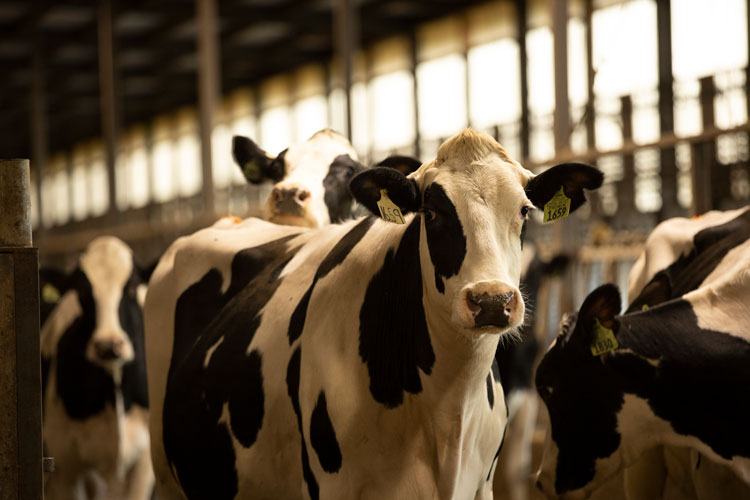
The U.S. Food and Drug Administration is implementing guidance that will change some animal antibiotic drug access from over-the-counter to prescription status no later than June 11, 2023.
“Everyone in the dairy industry has a responsibility to use antibiotics judiciously and to take steps to prevent the development of antibiotic resistance,” said Linda Tikofsky, D.V.M., Boehringer Ingelheim. “Using antibiotics thoughtfully, under the guidance of a veterinarian, can have a positive effect.”
With this change fast approaching, now is a great time for dairy producers to reassess their antibiotic usage, treatment protocols, and work with a veterinarian to set their operation up for long-term success. With the guidance of a veterinarian, here are a few steps that can help lower antibiotic use:
1. Diagnose with on-farm culturing.
Did you know that not all mastitis cases require antibiotic treatment? Implementing on-farm culturing allows producers to classify the type of mastitis that is infecting a cow. Dr. Tikofsky explains that if she were to culture 100 cows with mastitis, the results usually follow the 30-30-30 rule:
- One-third no-growth: A no-growth case means that the cow has cleared the infection on her own and does not need antibiotic treatment.
- One-third Gram-negative: Most mild and moderate Gram-negative mastitis cases, including those caused by E. coli, will self-cure, and antibiotic treatment will not alter the outcome.1
- One-third Gram-positive: Gram-positive mastitis cases do require antibiotic treatment and can become chronic if left untreated.
“If we adopt a culture-based system and stop treating no-growth and Gram-negative cases, we can reduce mastitis treatment by 60 percent,2” asserted Dr. Linda Tikofsky, Boehringer Ingelheim. “When dealing with a Gram-positive infection, a short-duration mastitis therapy can eliminate the infection and reduce the length of time cows spend in the hospital pen.” A veterinarian is an important resource when setting up a culturing system and interpreting results.
2. Treat a cow’s infection, not inflammation.
Clinical mastitis is recognized when a producer sees abnormalities in the milk, the cow’s quarter, or in the cow. Visible changes in the milk are the result of inflammation or the cow’s response to infection. On most farms, it is common practice to treat until a cow’s milk is back to normal (which is usually about four to six days). This is why five-day treatment regimens have become common. However, this may be leading producers to over-treat with antibiotics.
The infection can often be resolved 24 to 48 hours after treatment, but inflammation may continue for three to four more days while the cow eliminates dead bacteria and white blood cells from her body. Producers can decrease antibiotic use by implementing a two or three-treatment regimen.
3. Trust the product label.
Even after antibiotics have been administered to a cow, it is common for her to display symptoms for several days following. Best practice is to be patient and trust that the drug is working the way the product label says it will. It is important not to re-treat just because a cow’s milk is still abnormal a few days after her mastitis treatment.
Before treating a cow, take the opportunity to familiarize yourself with product details such as administration techniques, dosage, and withdrawal periods. Keeping track of milk and meat withdrawal times is important when using any drug. If any questions come from reading a product label, connect with your veterinarian and ask for clarification or assistance.
4. Keep top-notch records.
Accurate records make tracking relapse rates easy. Economically, it may not make sense to treat a cow that has struggled with chronic mastitis or other conditions. Having top-notch records can help producers get more out of veterinary visits. Being able to walk through past treatments and disease trends with a veterinarian will allow for constructive treatment plan additions and alterations. With up-to-date written protocols, we can provide the best possible care for animals and provide our consumers with the utmost confidence in dairy products.

References:
1 Hess JL, Neuder LM, Sears PM. Rethinking clinical mastitis therapy, in Proceedings. 36th Annu Conf AABP 2003:169–170.
2 Vasquez AK, Nydam DV, Capel MB, et al. Clinical outcome comparison of immediate blanket treatment versus a delayed pathogen-based treatment protocol for clinical mastitis in a New York dairy herd. J Dairy Sci 2017;100(4):2992–3003.
©2023 Boehringer Ingelheim Animal Health USA Inc., Duluth, GA. All Rights Reserved. US-BOV-0062-2023-A


